When it comes to the world of Japanese katana swords, especially the iconic katana, the choice of steel plays a vital role in determining the weapon’s durability, sharpness, and overall performance. One of the increasingly popular materials in modern swordsmithing is manganese steel. Combining tradition with innovation, a manganese steel katana represents a blend of strength, resilience, and cost-efficiency, making it a preferred option for martial artists, collectors, and sword enthusiasts alike.
What Is Manganese Steel?
Manganese steel, often referred to as Hadfield steel, is a high-impact-resistant alloy known for its toughness and work-hardening properties. Composed primarily of iron, with 12–14% manganese and around 1% carbon, this steel becomes harder with repeated impact or stress rather than wearing down, which is a significant advantage in functional blade use. It was first developed in the late 19th century and has since been used in heavy-duty tools, mining equipment, and industrial applications. More recently, its incredible properties have been adapted for sword-making—especially for crafting strong, reliable katana blades.
Why Use Manganese Steel for a Katana?
A traditional katana is admired for its sharp edge, curved blade, and meticulous forging methods. However, folded carbon steels, though authentic and historically accurate, can be expensive and more prone to corrosion if not maintained properly. Manganese steel offers a practical alternative.
Durability: Manganese steel is exceptionally strong and can absorb high levels of impact without deforming or breaking. This is especially valuable for functional swords used in cutting exercises or martial arts training.
Edge Retention: Despite being extremely tough, manganese steel can also hold a sharp edge for extended periods, making it reliable for clean, efficient cuts.
Low Maintenance: Compared to high-carbon steel, manganese steel is more resistant to rust and corrosion, requiring less rigorous maintenance while still offering long-term durability.
Affordability: Manganese steel is easier to produce and work with, making it a more affordable choice for those looking to own a battle-ready katana without the high cost of traditional tamahagane or folded steel blades.
The Look and Feel
Manganese steel katanas often feature modern, eye-catching finishes—such as matte black, dark grey, or color-treated blades—which appeal to both traditionalists and fans of contemporary sword designs. These blades are usually full-tang, meaning the steel extends through the entire handle, offering superior strength and balance.
Handles may include classic elements like ray skin (samegawa) wrapping, or more modern materials for comfort and control. Scabbards (saya) can range from lacquered wood to leather, further enhancing the katana’s visual appeal and usability.
Final Thoughts
A manganese steel katana is a perfect fusion of tradition and modern metallurgy. It brings the spirit of the samurai into today’s world by offering a sword that is not only beautiful and historically inspired but also strong, practical, and accessible. Whether you are a martial artist, a collector, or someone passionate about Japanese culture, this type of katana is a worthy addition to your collection.
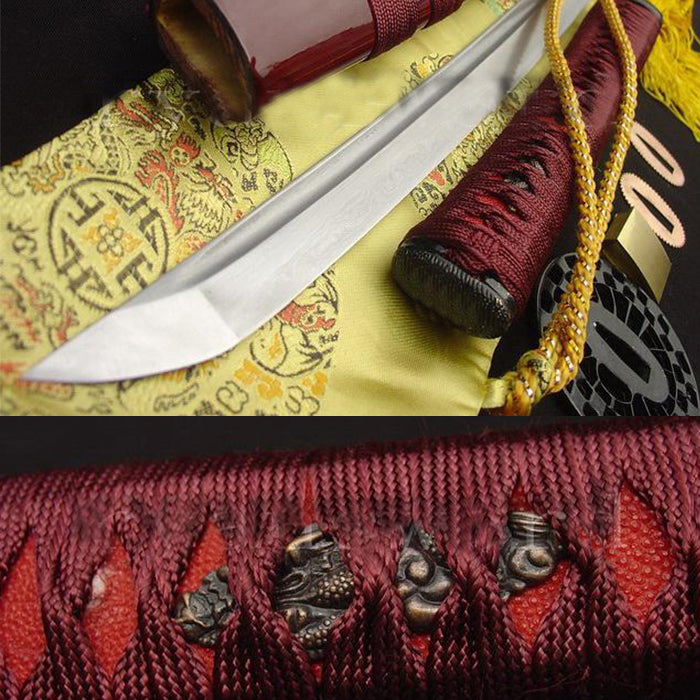
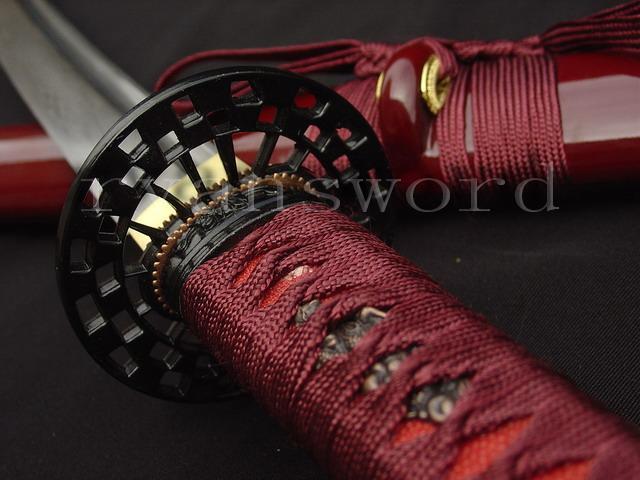 Handmade Red Japanese Sword Samurai Katana Folded Steel Full Tang Blade Sharp
Handmade Red Japanese Sword Samurai Katana Folded Steel Full Tang Blade Sharp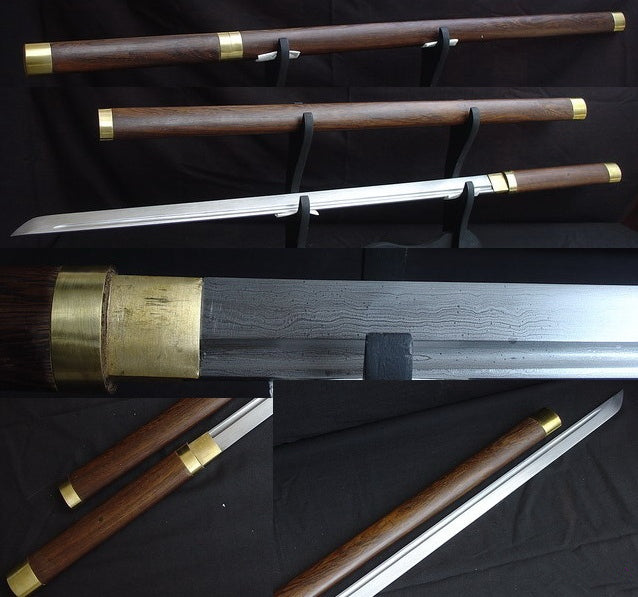 Hand Forged Folded Steel Japanese Samurai Shirasaya Sword Sharp Edge
Hand Forged Folded Steel Japanese Samurai Shirasaya Sword Sharp Edge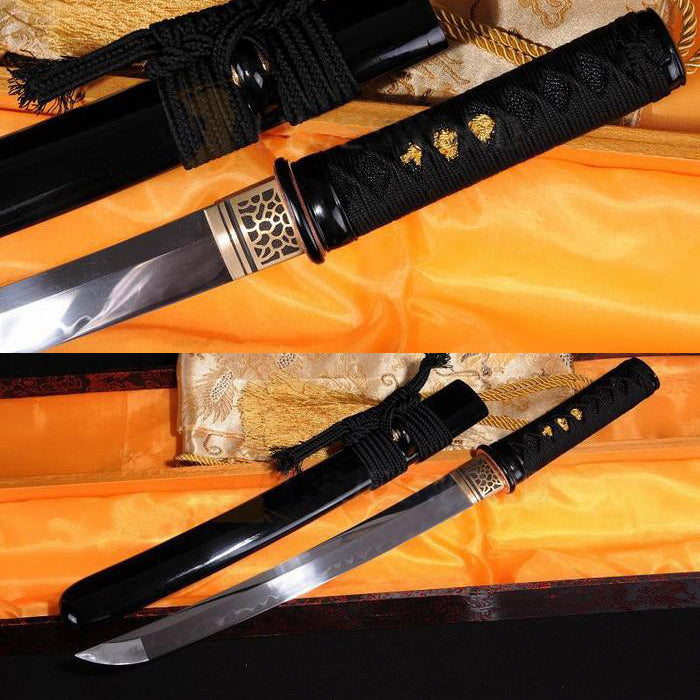
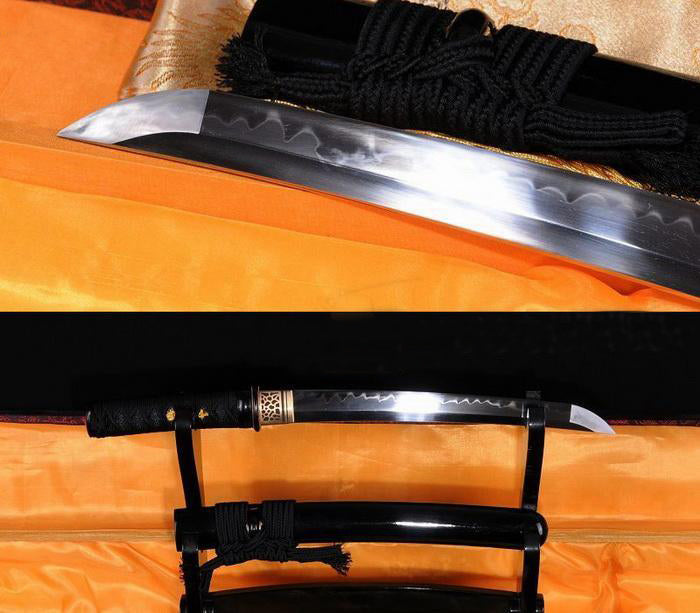 Handmade Katana Full Tang Tanto Short Clay Tempered
Handmade Katana Full Tang Tanto Short Clay Tempered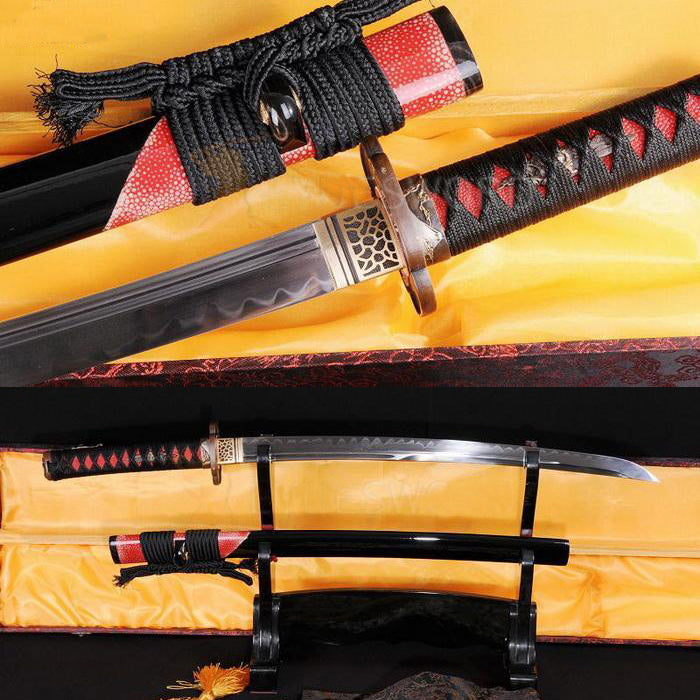
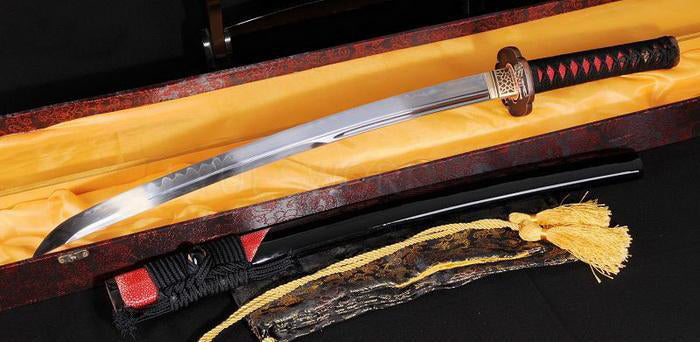 Authentic Japanese Samurai Wakizashi Sword Clay Tempered Blade Brass Tsuba
Authentic Japanese Samurai Wakizashi Sword Clay Tempered Blade Brass Tsuba








